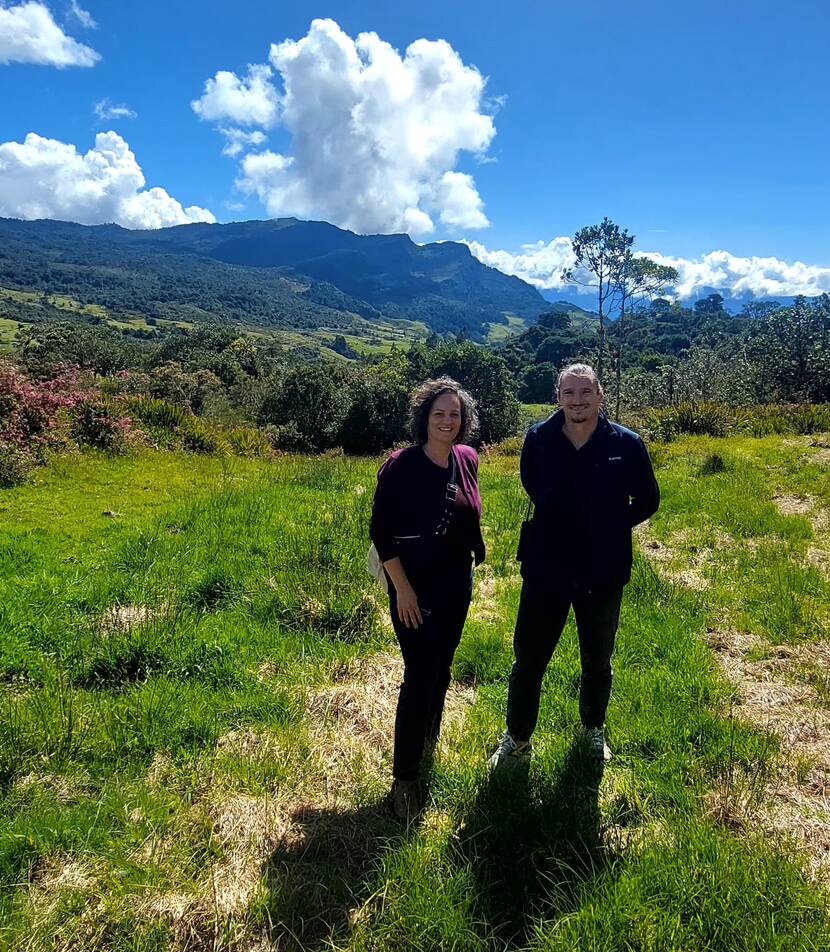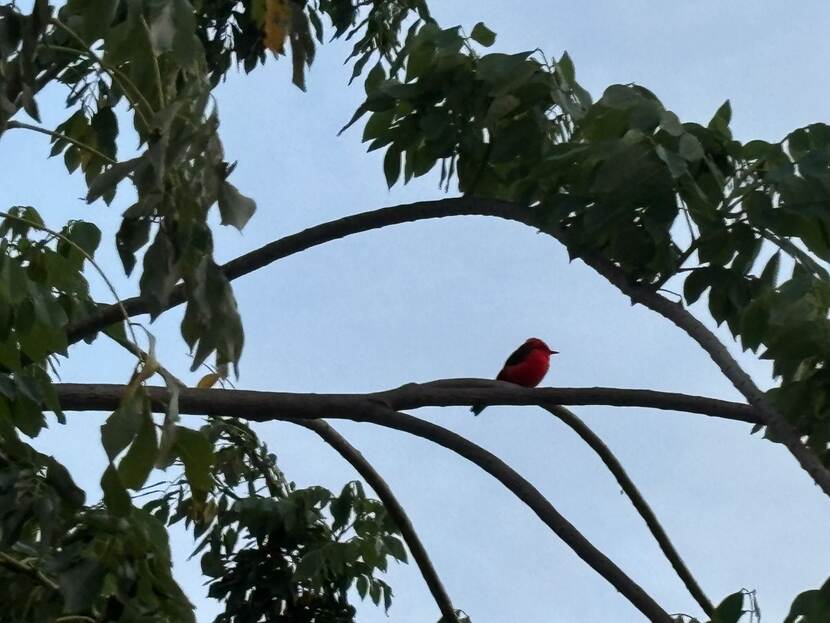Building Bridges for Biodiversity: Insights from Colombia and CoP16
Our colleague Emiel Mulder, former agriculture attaché at the Netherlands embassy in South Africa, started as regional biodiversity counselor for South America and is based in Brazil. Emiel visited Colombia for the first time for work in the context of 16th Conference of the Parties of the Convention on Biological Diversity, which was taking place 21 Oct- 1 Nov, 2024 in Cali, Colombia. In this article we will share the experiences we lived with our colleague Emiel during this visit to the country.

To take full advantage of the visit, the Colombia team prepared a detailed agenda that included meetings with key stakeholders in the country and field visits focused on biodiversity issues. These activities allowed us to strengthen connections with NGOs and other relevant Dutch organizations active in Colombia in biodiversity, forests and sustainable agriculture. In addition, the field visits provided direct insight into the challenges and opportunities related to biodiversity, ecosystems and sustainability in Colombia, thus enriching the prospects for future collaborations.
Before leaving for CoP16, the first visit we made was to the water reservoirs behind the Bogota mountains, which are responsible for the drinking water and Hydro power for the city.

Due to very low rainfall patterns affected by climate change, the city of Bogota for over half a year has been facing with water restrictions, and we wanted to witness the hydrological state of play for ourselves. We were very impressed to see the difference in the water levels compared to the “normal” situation. At the end of October the water levels were just around 30% of maximal capacity.
The Bogota mayor had to order water shut offs throughout the city, in which neighborhoods take turns every week to ten days. Just recently, over the past few weeks, the El Niño effects turned to the La Niña effect, which brought huge amounts of rain to the city and country - even to the point of local floods to Bogota and around Colombia.
As a result, reservoir levels have reached 53,7%. However, the rains have not lasted much longer than one month and, in recent days, some of the reservoirs have again lowered their levels. The mayor continues to call on the population to maintain a responsible water consumption, keeping saving actions to continue helping the recovery of the level of the reservoirs as December and January are usually months of drought and low rainfall in the area.
Connecting with key stakeholders driving biodiversity and sustainability in Colombia
The Colombia LVVN team also organized a meeting for Emiel to get to know the stakeholders in Colombia, who the Netherlands Embassy interacts with on a regular basis. These included Tropenbos Colombia, Conexion (ICCO), the international trade initiative IDH, Solidaridad Colombia, Gaia Amazonas, and WWF Colombia. Emiel had the opportunity to learn firsthand about the projects in which each of these entities is working in the country in favor of biodiversity and sustainability.
Engaging with global and local stakeholders at CoP16 in Cali
At the CoP16 in the City of Cali, Emiel and the LVVN-counselor for Colombia, Léontine Crisson, had the opportunity to meet stakeholders both from Colombia, the Netherlands as well as international ones. It presented Emiel with an excellent opportunity to get to know the network of stakeholders in the biodiversity remit and talk first hand to NGO’s, businesses, knowledge institutions and indigenous community representatives.

A visit to the botanical garden in Bogota
After being present at CoP, Emiel and Léontine returned to Bogotá to gain more insights into Colombia’s biodiversity by visiting the botanical garden. Here, a vast representation of Colombia‘s national biodiversity is being researched and presented to a wide public, including an important education program for children and high school students, who were widely present across the premises.
Exploring the Paramo Ecosystem in Colombia
During those days, together with our ambassador Reina Buijs, Tobias Rijnsburg invited us to join him for a field visit just outside of Bogotá. Tobias is the co-founder of HolaAndes, a cheese making factory Dutch style in the Colombian countryside. We were able to participate in the 25th anniversary celebration of the dairy cooperative COLEGA with whom Tobias collaborates in the cheese factory in Monquentiva, in the municipality of Guatavita.

Tobias guided us to get to know the beautiful natural surroundings of the village, including crossing the Paramo ecosystem at an altitude of 3.500 m above sea level.
We were very happy to be able to take part in the celebrations, which were also very special for Tobias. We witnessed his strong connection and near-family ties to the villages community and the cooperative founder, Mr. José Ignacio, and the important part they play in Tobias’ life in Colombia.
Lessons learned: reflections on travel and opportunities to work with Colombia

For Emiel this trip was very insightful since he was able to meet the extensive network that the LAN team in Colombia has established over the years. It was also a good opportunity to meet the LAN team in person and discuss how we are going to work on biodiversity together as there are many opportunities in Colombia. Take agroforestry for example. With Tropenbos International we will do some more research on key success factors for agroforestry for certain crops and see how we scale up successful projects within the beautiful continent of South America. Additionally Emiel also learned about way the Netherlands can improve its effort on agroforestry, something that already receives quite some attention in our own country. But best practices from abroad are always useful!
Furthermore, Emiel’s visit to both the COP and the field visits in and around Bogotá gave him a better perspective on how the Netherlands can cooperate with, support or facilitate Dutch companies, knowledge institutions, NGO’s and other countries with the ambitions on how to improve conservation, restoration and sustainably use biodiversity in South America and beyond.
The field visit with the Dutch Water Envoy, Ms. Meike van Ginneken and the colleagues from the Blue Deal to a water treatment plant in Cali showed the importance of clean water for agriculture and drinking water availability. Our Water Envoy studied in Cali 25 years ago and now saw a river that was habilitated which was a good example and result of Dutch efforts supporting the ecosystem around Cali.

On a personal note Emiel was impressed by the incredible diversity of birds that he saw in the city of Cali. Colombia has the most amount of bird species in the world, being the country in the world with the most amount of different bird species, 1873!
There was a lot to follow up on for Emiel and the teams working on nature and biodiversity. Stay tuned for the plans for 2025!
More information
If you would like to contact the team in Bogota, feel free to send an email to bog-lvvn@minbuza.nl or to our colleague Emiel Mulder to bra-lvvn@minbuza.nl.